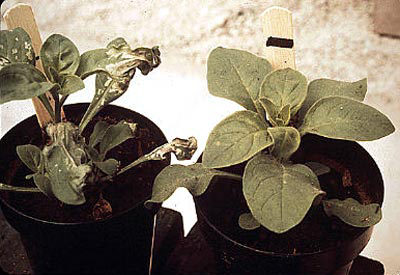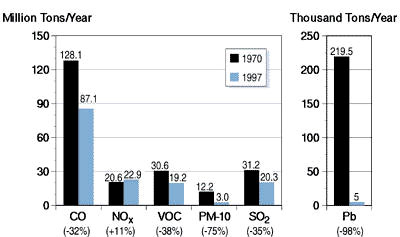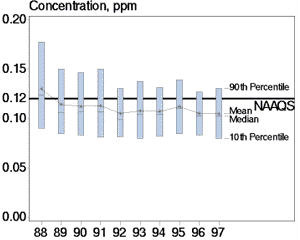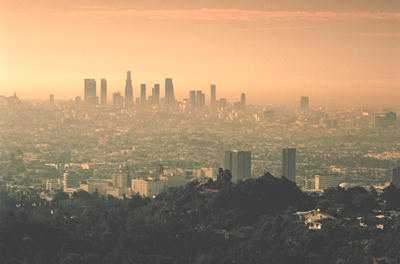
Photo courtesy U.S. EPA
Ozone is a major component of smog.
The weather report on the radio or TV tells you that it is going to be sunny and hot and that an orange ozone alert has been issued. What is ozone? What does an orange alert mean? Why should you be concerned about it?
In this article, we will examine what ozone is, how it is produced, what health hazards it poses and what you can do to reduce ozone pollution.
ÂÂOzone is a molecule of three oxygen atoms bound together (O3). It is unstable and highly reactive. Ozone is used as a bleach, a deodorizing agent, and a sterilization agent for air and drinking water. At low concentrations, it is toxic.
|
Related Articles
|
Ozone is found naturally in small concentrations in the stratosphere, a layer of Earth's upper atmosphere. In this upper atmosphere, ozone is made when ultraviolet light from the sun splits an oxygen molecule (O2), forming two single oxygen atoms. If a freed atom collides with an oxogen molecule, it becomes ozone. Stratospheric ozone has been called "good" ozone because it protects the Earth's surface from dangerous ultraviolet light.
 Photo courtesy NIEHS/NIH Ozone production from NOx pollutants: Oxygen atoms freed from nitrogen dioxide by the action of sunlight attack oxygen molecules to make ozone. Nitrogen oxide can combine with ozone to reform nitrogen dioxide, and the cycle repeats. |
Ozone can also be found in the troposphere, the lowest layer of the atmosphere. Tropospheric ozone (often termed "bad" ozone) is man-made, a result of air pollution from internal combustion engines and power plants. Automobile exhaust and industrial emissions release a family of nitrogen oxide gases (NOx) and volatile organic compounds (VOC), by-products of burning gasoline and coal. NOx and VOC combine chemically with oxygen to form ozone during sunny, high-temperature conditions of late spring, summer and early fall. High levels of ozone are usually formed in the heat of the afternoon and early evening, dissipating during the cooler nights.
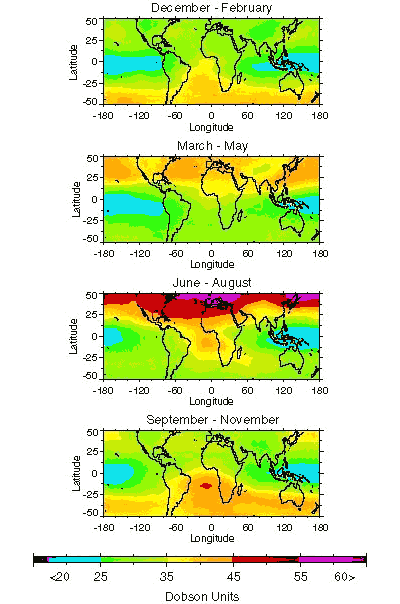 Photo courtesy NASA Worldwide seasonal changes in tropospheric ozone: Tropospheric ozone increases during summers in the northern and southern hemispheres when the climate is hot. The most tropospheric ozone is observed during summer in the northern hemisphere. |
Although ozone pollution is formed mainly in urban and suburban areas, it ends up in rural areas as well, carried by prevailing winds or resulting from cars and trucks that travel into rural areas. Significant levels of ozone pollution can be detected in rural areas as far as 250 miles (402 kilometers) downwind from urban industrial zones.
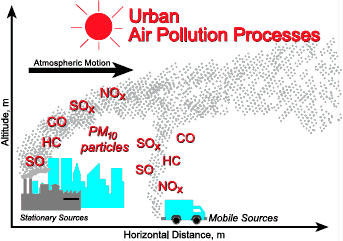 Photo courtesy NIEHS/NIH Ozone pollution can travel from urban to rural areas. |
Advertisement


